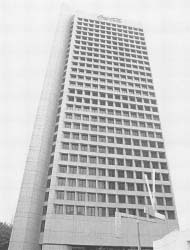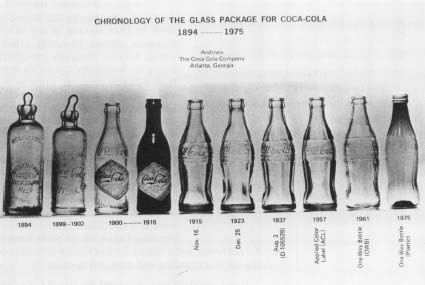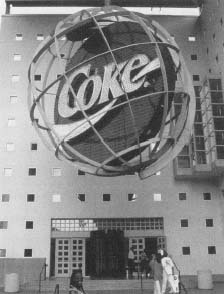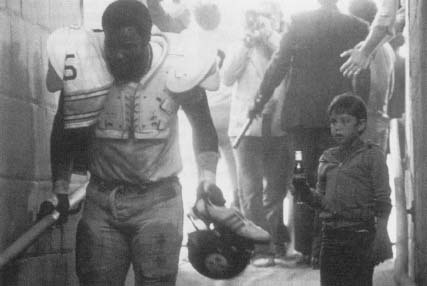Coca-Cola Company

1 Coca-Cola Plaza
Atlanta, Georgia 30313
(404) 676-2121
www.cocacola.com

Coca-Cola is not only the best-selling soft drink in the world, it is possibly the most recognized brand name. The company has been a leader in product development, advertising, and marketing for more than one hundred years, and has gone from annual sales of $50 in 1886 to worldwide sales of $20 billion in 2001. Four of the five best-selling soft drinks on the planet carry the Coca-Cola label. In the United States Coke has become as much an American icon as hot dogs, baseball, and McDonalds (see entry).
From Drugstore to Taste Sensation
The story of Coca-Cola began in the 1880s with John Pemberton (1831-1888), an Atlanta, Georgia, pharmacist. Among the many tonics and elixirs he sold was a concoction called French Wine of Coca, a wine from the Bordeaux region of France that was laced with a small amount of cocaine, a byproduct of the coca plant native to South America. At that time, the addictive and harmful qualities of cocaine were not known and it was not illegal in the United States. The coca wine also contained caffeine from the kola nut, native to Africa.
In 1886, Atlanta banned the sale and consumption of alcohol, so Pemberton revised his formula, removing the wine and adding sugar to make a syrup. Since the sugar made the syrup extremely sweet, Pemberton added citric acid to counterbalance the sweetness. He also added various fruit oils to improve the taste. The resulting brew, called Coca-Cola, was advertised as a medicine that would cure all sorts of health problems and sold in drugstores throughout Atlanta.
That summer, a customer walked into Jacobs Pharmacy, a drugstore just down the street from Pemberton's, and ordered the Coca-Cola syrup for a headache. He asked the pharmacist to mix it with soda water so he could drink it on the spot. When the customer remarked how good it tasted, a new carbonated soft drink was born. It was first sold at Jacobs Pharmacy in Atlanta for five cents a glass. In 1886, Coca-Cola sales averaged nine drinks per day. That year, Pemberton sold twenty-five gallons of Coca-Cola syrup, distributed in bright red wooden kegs. Red has been the color most associated with the soft drink ever since.
Coca-Cola at a Glance
- Employees: 38,000
- CEO: Doug Daft
- Subsidiaries: Chukyo Coca-Cola Bottling Company Ltd.; Coca-Cola Amatil Ltd; Coca-Cola Bottling Company Consolidated; Coca-Cola Enterprises, Inc.; Coca-Cola FEMSA, S.A. de C.V.; Coca-Cola Hellenic Bottling Company S.A.; Embotelladoras Coca-Cola Polar, S.A.; Fuji Coca-Cola Bottling Company, Ltd.; Hokkaido Coca-Cola Bottling Company, Ltd.; Kinki Coca-Cola Bottling Company, Ltd.; Mikuni Coca-Cola Bottling Company, Ltd.; The Minute Maid Company; Odwalla, Inc.; Panamerican Beverages, Inc.; Philadelphia Coca-Cola Bottling Company
- Major Competitors: Cadbury Schweppes; Nestle; PepsiCo, Inc.
- Notable Products: Coca-Cola: Diet Coke, Cherry Coke, Vanilla Coke; Barq's Root Beer; Fruitopia fruit drinks; Minute Maid products; PowerAde sports drink; Sprite products; Dasani water; Fanta orange drinks
The business, however, was not a raging success. Because of financial problems and poor health, Pemberton sold a portion of his company to Atlanta businessman Asa Griggs Candler (1851-1929) in 1888. By 1891, Candler had taken over the entire enterprise. He paid $2,300 for what would become a soft drink empire. Candler's purchase of Coca-Coca was a natural one. He had trained as a pharmacist, but never practiced; instead he made a name for himself in the wholesale drug business. As a natural born salesman, Candler became the company's first president. Within four years, his flair for merchandising helped expand Coca-Cola into every U.S. state and territory. By then, the use of cocaine had become controversial as researchers realized it had addictive properties. Candler phased out the use of cocaine in the drink, replacing it with an extract from the coca leaf from which the cocaine had been removed.
Timeline
- 1886:
- Atlanta pharmacist John Pemberton invents the Coca-Cola formula.
- 1891:
- Atlanta businessman Asa G. Chandler buys the company for $2,300.
- 1915:
- The distinctly shaped Coca-Cola bottle is introduced.
- 1919:
- Coca-Cola is sold to a group of investors for $25 million.
- 1923:
- Robert W. Woodruff becomes company president.
- 1927:
- The first Coca-Cola radio advertisement airs.
- 1929:
- Coca-Cola introduces "The pause that refreshes" slogan.
- 1940:
- Coke is bottled in more than forty countries.
- 1961:
- Sprite is introduced.
- 1963:
- Company introduces TAB diet cola.
- 1970:
- Coca-Cola launches "It's the real thing" advertising slogan.
- 1981:
- Roberto C. Coizueta becomes CEO of Coca-Cola.
- 1982:
- Diet Coke is introduced.
- 1985:
- New Coke replaces original Coca-Cola formula; original formula returns after several months as Coca-Cola Classic.
- 1988:
- Coca-Cola opens a plant in the Soviet Union (now Russia).
- 1991:
- Cherry Coke is introduced.
- 2000:
- Doug Daft becomes CEO.
- 2001:
- Diet Lemon Coke is introduced.
- 2002:
- Company launches Vanilla Coke.

Coke Goes Nationwide
In 1894, Coca-Cola opened a syrup production plant in Dallas, Texas, the first outside of Atlanta. That same year, Mississippi businessman Joseph Biedenharn first put the drink into glass bottles. He sent several bottles to Candler, who was not impressed. Candler believed Coca-Cola should be mixed up fresh and served to customers at lunch counters and soda fountains. He changed his mind in 1899, however, and sold the rights to bottle Coca-Cola to Chattanooga, Tennessee, lawyers Benjamin Franklin Thomas and Joseph B. Whitehead. The deal gave the partners the right to purchase Coca-Cola syrup for one dollar per gallon—for an indefinite period of time. The two men sold bottling franchises to others, which meant people across the United States were enjoying the refreshing, new beverage. In 1915, the distinctive Coca-Cola contoured glass bottle was introduced and by 1920, the number of bottling plants had jumped from the original two to nearly one thousand.
A group of investors bought the Coca-Cola company for $25 million in 1919. In 1923, the son of one of the investors, Robert Woodruff (1889-1985), became company president. Under his leadership, Coca-Cola went from a mostly American drink to the most consumed soft drink in the world. Several successful marketing campaigns involved sports: Coca-Cola was introduced to The Netherlands during the 1928 Olympics in Amsterdam, and the logo was featured on dog-racing sleds in Canada and on walls of bullfighting arenas in Spain. Woodruff was also responsible for introducing the "six-pack." When Woodruff heard that some women in the United States would not purchase Coca-Cola six-packs because they did not have a bottle opener, he sent women door-to-door handing out and installing wall-mounted openers.
It was Woodruff who pioneered the sale of Coca-Cola at service stations, introducing the large open-top metal coolers that could hold more than one hundred bottles of the fizzy drink. In order to ensure that Coca-Cola tasted the same no matter where it was bought, Woodruff required bottlers to follow strict standards, including mixing the exact ratio of syrup to carbonated water. Heavy advertising remained a mainstay of the company, much of which featured catchy slogans, such as "The pause that refreshes," introduced in 1929 and "The best friend thirst ever had" in 1938. The rapid spread of radio in the 1930s gave Coca-Cola a new medium for advertising and the company used it extensively.
Frank M. Robinson, John Pemberton's partner and bookkeeper, came up with the Coca-Cola name and the distinct logo of white handwriting on a red background. He also took over manufacture, promotion, and advertising of the new product. On May 29, 1886, he placed the following advertisement in the Atlanta Daily journal: "Coca-Cola. Delicious! Refreshing! Invigorating! The new and popular soda fountain drink, containing properties of the wonderful coca plant and the famous cola nuts."
Going Global
By 1940, Coke, as it was popularly known, was being bottled in forty countries, including larger nations like France, China, and Mexico, and the tiniest of countries, such as Luxembourg, Trinidad, and Bermuda. But it recorded the highest overseas sales in three nations: Canada, Germany, and Cuba. When the United States entered World War II (1939-45) in 1941, Coca-Cola rallied the troops. Woodruff ordered that Coke be made available to every serviceman, no matter where in the world he was, for five cents a bottle. Many Europeans got their first taste of Coke during the war and when it ended in 1945, the soft drink was popular across western Europe.
In the postwar prosperity of the 1950s, America was awash in a sea of Coca-Cola. It became one of a handful of items that helped define the decade, along with drive-in theaters, drive-in restaurants, rock and roll, and the tail-finned convertible. In the middle of it, Woodruff retired in 1955 as CEO but remained on the company's finance committee, where he continued to exert substantial power in running the company. After Woodruff's retirement, Coca-Cola had a number of CEOs and presidents into the 1980s.
After seventy-five years featuring a single product, Coca-Cola added more items in the 1960s: Sprite in 1961, the diet drink TAB in 1963, and Fresca in 1966, all of which proved successful. In the 1970s, Coca-Cola expand its global presence, opening plants in several dozen countries, including Cambodia, Paraguay, and Turkey. Coke's international appeal was broadcast in a 1971 television commercial in which a group of young people from around the world stood on a hilltop and sang, "I'd like to buy the world a Coke."
Collecting Coke
Although he did not know it then, Asa Candler's knack for advertising led to the creation of a multitude of Coca-Cola collectibles. In the 1890s, he distributed an assortment of items bearing the Coca-Cola logo to pharmacies that sold the beverage. In those days, most pharmacies had a soda fountain that sold ice cream and soft drinks. The products included clocks, urns, calendars, and druggist scales. Today, Coke enthusiasts seek out anything that bears the famous red and white logo. Collectibles range from original bottles, to drinking glasses, serving trays, ink blotters, ashtrays, and paper soda jerk hats (caps worn by soda fountain servers). Some of the earliest items sell for thousands of dollars each.
A big change occurred at Coca-Cola in 1981 when Roberto C. Goizueta became CEO and chairman of the board of directors. Goizueta, an immigrant who fled the communist takeover of Cuba twenty years earlier, brought change and innovation to the company. He was responsible for introducing Diet Coke in 1980 while he was the company's president and launched the "Coke is it" advertising campaign in 1982. But

Things Don't Go Better with New Coke
Faced with growing competition from rival Pepsi (see entry), Goizueta decided it was time to do something drastic. At the time, Pepsi was conducting its "Pepsi Challenge," a blind taste test that showed a majority of people preferred Pepsi over Coke. When Coca-Cola conducted its own taste tests, it found the same results. Goizueta did not want to introduce a new cola drink so he decided to change the original formula of Coke. Basically, Pepsi was sweeter than Coke because it used corn syrup rather than sugar as the main sweetener. The New Coke, as it was called, tasted more like Pepsi and was the first change in the Coca-Cola formula in nearly one hundred years.
Despite a large-scale advertising and marketing campaign, New Coke was an immediate flop. After it was introduced in 1985, Coca-Cola received thousands of telephone calls and letters each day expressing dissatisfaction with the change. Within a few months, the company brought back the original formula, calling it Coca-Cola Classic. Several years later, the company discontinued New Coke.
Another gamble that almost did not pay off for Coca-Cola was its purchase of Columbia Pictures in 1982 for $692 million. The beverage company had no experience in managing a movie studio, and Columbia had a long string of boxoffice losers after the hit movie Ghostbusters was released in 1984. But Goizueta also used Columbia to invest in television programs, such as game show favorites Wheel of Fortune and Jeopardy. The profits made from those shows quickly made up for the money lost in the movie venture. In 1989, Coca-Cola

Coke Conquers the World
With the fall of communist regimes throughout Eastern Europe in the late 1980s and the early 1990s, the worldwide soft drink market opened up. Coca-Cola was there, investing $1 billion in the region. It helped build million-dollar bottling plants in such cities as Warsaw, Poland, and St. Petersburg, Russia. "We used to be an American company with a large international business," Goizueta said in a 1993 Fortune interview. "Now we are a large international company with a sizable American business." Goizueta remained as head of Coca-Cola until his death in 1997.
Goizueta was replaced as CEO by Doug Ivester, who only held the position for two years. He resigned in 1999 and was replaced by Doug Daft, formerly head of Coke's Middle East and Far East divisions. In 2000, Carl H. Ware, Coca-Cola's highest-ranking African American executive, announced he was retiring as senior vice president and head of African operations. He later decided to remain with the company when Daft promoted him to senior manager of the Global Public Affairs and Administration division. One of the first challenges faced by Daft was to reduce the company' operating expenses. He did so by cutting six thousand jobs, which amounted to one-fifth of the company's workforce. About twenty-five hundred of the job cuts were at Coke's Atlanta headquarters.
According to the company Web site, more than seven thousand Coca-Cola products are consumed every second.
Following the success of Cherry Coke, introduced in 1991, the company launched two additional products: Diet Lemon Coke in 2001 and Vanilla Coke in 2002. As of 2002, Coca-Cola was still the top selling soft drink in the world, followed by Pepsi. The third most popular soft drink was Diet Coke. The company had $20 billion in sales in 2001 that came from nearly three hundred drink brands in two hundred countries. As Coca-Cola started the twenty-first century, its grip on the global soft drink market seemed secure: about 60 percent of its sales revenue was from outside the United States and it controlled half of the soft drink market worldwide. For tens of millions of soft drink consumers from America to Zaire, Coke was still the "real thing."
Comment about this article, ask questions, or add new information about this topic: